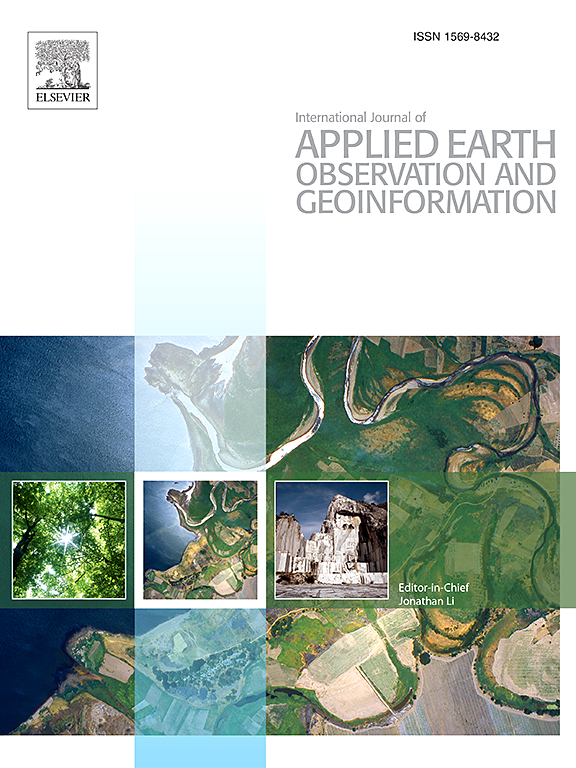Scientists yet to consider spatial correlation in assessing uncertainty of spatial averages and totals
IF 7.6
Q1 REMOTE SENSING
International journal of applied earth observation and geoinformation : ITC journal
Pub Date : 2025-03-23
DOI:10.1016/j.jag.2025.104472
引用次数: 0
Abstract
High-resolution maps of climate and ecosystem variables are essential for supporting terrestrial carbon stocks and fluxes estimation, climate change mitigation, and ecosystem degradation assessment. These maps are usually created using remotely sensed data obtained from various types of imagery and sensors. The remote sensing data typically serve as covariates to deliver spatially explicit information using machine learning algorithms. Often the uncertainty associated with the maps is also quantified, for instance by prediction error variance maps or by maps of the lower and upper limits of a prediction interval. In addition, these products are often aggregated to regional, national, or global scales relevant to climate policy, natural resource inventory, and measurement, reporting, and verification (MRV) frameworks. Quantifying uncertainty in aggregated products is crucial as it is necessary to assess their value and evaluate whether changes and trends in aggregated estimates are statistically significant. However, we argue that such uncertainty is frequently inaccurately assessed due to the neglect of spatial correlation in map errors. This critical methodological issue has been overlooked in most large-scale mapping studies.
求助全文
约1分钟内获得全文
求助全文
来源期刊

International journal of applied earth observation and geoinformation : ITC journal
Global and Planetary Change, Management, Monitoring, Policy and Law, Earth-Surface Processes, Computers in Earth Sciences
CiteScore
12.00
自引率
0.00%
发文量
0
审稿时长
77 days
期刊介绍:
The International Journal of Applied Earth Observation and Geoinformation publishes original papers that utilize earth observation data for natural resource and environmental inventory and management. These data primarily originate from remote sensing platforms, including satellites and aircraft, supplemented by surface and subsurface measurements. Addressing natural resources such as forests, agricultural land, soils, and water, as well as environmental concerns like biodiversity, land degradation, and hazards, the journal explores conceptual and data-driven approaches. It covers geoinformation themes like capturing, databasing, visualization, interpretation, data quality, and spatial uncertainty.
 求助内容:
求助内容: 应助结果提醒方式:
应助结果提醒方式:


